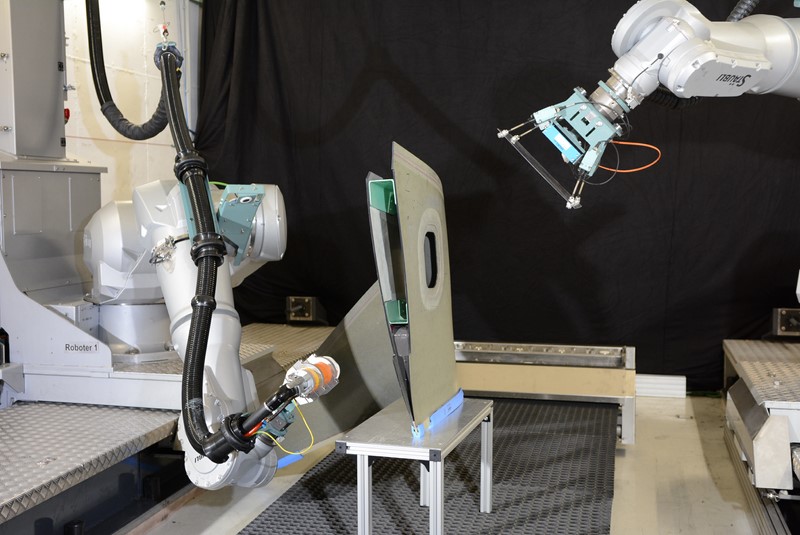
The knowledge and understanding related to the defects of CFRP parts are key factors for the application of a damage tolerance approach, and for increasing the safety of composite structures. QUICOM aimed at taking the next big step in the characterization, simulation and modeling of aeronautic components. The main objective was to escalate conventional aeronautic NDT techniques in the short run, and to replace them in the long run.
From the beginning of the project, the development of QUICOM techniques remained closely aligned to the industrial requirements and guidelines, in order to e_ectively correspond to end-users needs. The progress beyond the state of the art focused on the extensive use of X-ray computed tomography (XCT) techniques to detect defects in small high volume parts, composite metallic parts, as well as complex and large composite structures.
The developed QUICOM technology platform enables thorough inspections at high levels of detail, and hence allows for reducing the design, production and rework costs, due to an enhanced understanding of the real inner 3D structures. The availability of such an inspection enables higher structural efficiency and higher performance compared to recent state-of-the-art.
Scanning protocols & XCT techniques
Noiseless single photon counting devices were used for the visualization of low absorption components, enabling a broad dynamic range. A series of advanced X-ray techniques were investigated, such as multi energy XCT, robot based XCT, fast XCT techniques, and novel data analysis methods.
In particular for small, high volume parts, the possibilities and limits of fast inspection concepts were worked out. XCT acquisition and reconstruction methods were adapted to the requirements of large and complex parts inspection, using robot-based XCT systems.
Dual energy CT (DECT) scans were proved to be suitable for the identification of pores within hybrid specimens (composite metallic parts). Further experiments have been carried out for the decomposition of carbon and aluminum. In particular for small, high volume parts, the possibilities and limits of fast inspection concepts were worked out. XCT acquisition and reconstruction methods were adapted to the requirements of large and complex parts inspection, using robot-based XCT systems.
Software Analysis
The characterization of aeronautic structures was facilitated by the development of dedicated QUICOM algorithms and methods, aiming to address quantitative characterization of the inner structure of composite materials, operating on the generated CT data. This included image enhancement techniques, analysis concerning structural features (e.g. orientation or alignment), as well as material decomposition in combination with meaningful visualizations of the results.
In this context reliable and robust methods were implemented and used for the determination, extraction and characterization of the geometry, orientation and shape of the inner structure in CFRP, as well as for determining geometrical and material properties. Applied techniques examine the determination of surface, detection of pores, orientation of fibers, and more. For example the FiberScout tool allows investigating and exploring 3DCT datasets of fiber reinforced composites in a simple and fast way.
Simulation & Modeling
The developed optimized models allow for generating a detailed understanding about the effect of production flaws, such as voids or a deviation in yarn geometry or shape, on the mechanical behavior of the composite structures.
Simulation of specified test scenarios
2D and 3D X-ray imaging techniques have been applied, optimized and evaluated on the end user’s samples. The studies focused on investigating dual and multi-energy techniques, as well as artifact removal.
Development and optimization of CFRP models
The studies were based on quantitative data analysis of the real inner structures of composite components, taking into account production flaws. The scanned CT images were further processed and defects were quantified in order to enable CFRP modelling based on the CT input data. In addition, a focus was put on the creation of a progressive damage model for the simulation of CFRPs as well as on the evaluation of the developed models.

